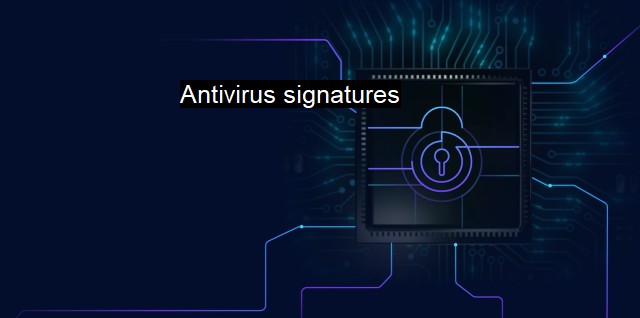What are Antivirus signatures?
Understanding Antivirus Signatures: How They Protect Against Multitudes of Malware Threats
The term "Antivirus signatures," also referred to as virus definitions, is a key component of any antivirus software in the realm of cybersecurity. These are descriptive pieces of information or patterns used by antivirus programs to identify malware, like viruses, worms, trojans, spyware, and ransomware, among others. an antivirus signature is the digital fingerprint of a specific kind of malicious software.An apt analogy for understanding the concept of an antivirus signature would be comparing it to criminal fingerprint databases used by police departments across the globe. When a crime happens, police capture fingerprints to match them against those already in the database. If a match is found, the criminal is identified. Similarly, antivirus software scans the user's computer and compares files against its database of known virus signatures. If a match is found, the antivirus alerts the user and takes necessary action.
The process of creating antivirus signatures is primarily handled by cybersecurity professionals and researchers. When a new type of virus or malware is identified and isolated, the researchers conduct an in-depth analysis of its construction, behaviors, and means of infiltration. They then create a unique signature for the particular virus based on their findings for easy identification in subsequent attack attempts. This new signature gets added to antivirus databases (which are then updated across user devices) enhancing the capabilities of the antivirus software to protect against the newly discovered malware.
In addition to identifying the threat, antivirus signatures also carry important additional information about the threat, including the type and severity of damage it can inflict, typical attacking behavior, and removal instructions. This data is crucial as it allows the antivirus software not only to identify but also to remediate the threat promptly and accurately.
Yet, antivirus signatures have their limitations. The most significant among these is the inability to detect and ward off unknown threats which have not yet been classified and have no corresponding signature in the antivirus databases. These threats, known as zero-day exploits, can cause substantial damage before a signature is created. The development of signatures for new threats also takes considerable time, during which users may remain at risk.
To compensate for the limitations of signature-based detection, other detection methods have been developed, including heuristic- and behavior-based detection. Heuristic-based detection uses algorithmic rules or weightings to identify malware, while behavior-based detection observes how applications behave in real-time.
Despite limitations, antivirus signatures play a critical role in protecting computer systems and data from the vast majority of known threats. They form the first line of defense in the layered security measures employed by organizations and individuals alike. As cybersecurity threats continue to evolve, so too will the approaches used to create antivirus signatures, ensuring that they remain a vital piece of the overall cybersecurity puzzle.
The cybersecurity world is in a perpetual state of warfare with hackers and cyber-criminals who devise newer malicious techniques to infiltrate systems. Meanwhile, cybersecurity experts and researchers work diligently, exploring these cyber threats, breaking them down, and formulating unique identifying signatures. As the end-users, we rely on these ever-evolving antivirus signatures in databases for protection against the vast world of known malware. These signatures highlight the importance of regularly updating antivirus software to ensure your digital environments are protected against the latest threats.

Antivirus signatures FAQs
What are antivirus signatures?
Antivirus signatures are unique patterns or codes that antivirus software use to identify and detect malware. These signatures are specific to each type of malware, and antivirus programs use them to scan files or incoming traffic for any suspicious activity.How do antivirus signatures work?
Antivirus signatures work by comparing the patterns or codes of incoming traffic or files against a database of known malware signatures. If the antivirus software finds a match, it will either quarantine the file or block the traffic to prevent the malware from infecting the device.Do antivirus signatures need to be updated?
Yes, antivirus signatures need frequent updates to protect your device from new and emerging malware threats. Cybercriminals are constantly creating new types of malware, and antivirus software relies on updated signatures to identify and block these threats.Are antivirus signatures 100% effective?
No, antivirus signatures are not 100% effective as cybercriminals are always updating and refining their malware to evade detection. It's important to use antivirus software in conjunction with other cybersecurity measures such as strong passwords, software updates, and safe browsing practices to ensure your device is fully protected from cyber threats.| | A | | | B | | | C | | | D | | | E | | | F | | | G | | | H | | | I | | | J | | | K | | | L | | | M | |
| | N | | | O | | | P | | | Q | | | R | | | S | | | T | | | U | | | V | | | W | | | X | | | Y | | | Z | |
| | 1 | | | 2 | | | 3 | | | 4 | | | 7 | | | 8 | | |||||||